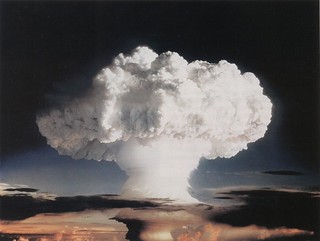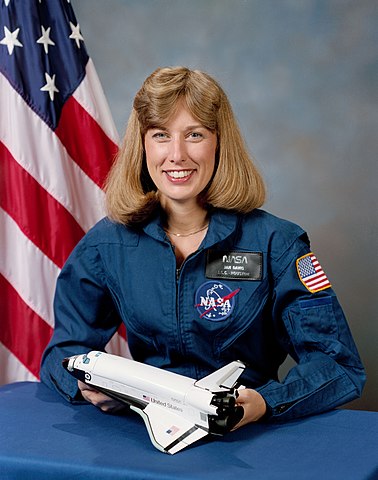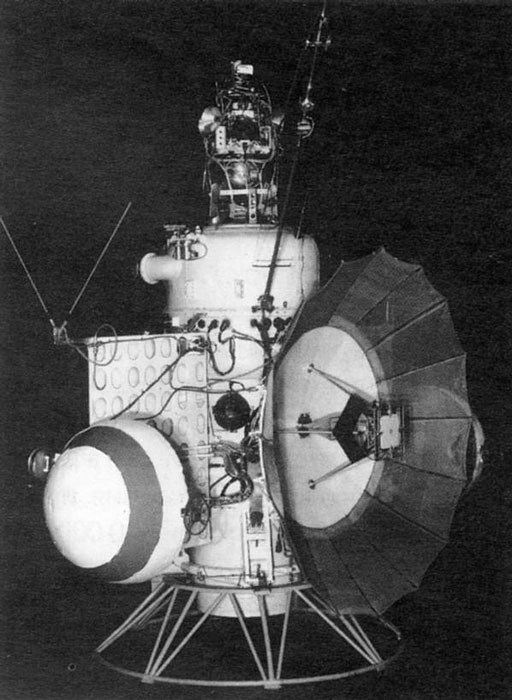
Space History for November 1
If you are not already a subscriber, you are welcome to enter your email address here to sign up to receive the Space History newsletter on a daily basis. Under no circumstances will we release your legitimate email address entered here to outside persons or organizations, and it will only be used for mailing the specific information you have requested.
| Enter your email address here: |
Unsubscribe instructions are included in every newsletter issue in case you decide you no longer wish to receive it.
Note: We record the IP address from which subscriptions are entered to help prevent SPAM abuses.
Race To Space
Someone will win the prize...
... but at what cost?
Visit RaceToSpaceProject.com
to find out more!
1870
In the United States, the US Weather Bureau (initially part of the Army Signal Corps, and later renamed the National Weather Service) began operations with reports telegraphed from 24 locations, and made its first official meteorological forecast.
ref: www.weather.gov
1875
Johann Palisa discovered asteroid #151 Abundantia at the Austrian Naval Observatory in Pula.
ref: en.wikipedia.org
1894
M. Wolf discovered asteroid #391 Ingeborg.
1905
M. Wolf discovered asteroids #578 Happelia and #1967 Menzel.
1911
A day of infamy, the first aerial bombardment in history took place when Second Lieutenant Giulio Gavotti of the Italian Army threw three Cipelli hand grenades on Turkish troops at Tagiura in Libya.
ref: en.wikipedia.org
1923
Born, Gordon R. Dickson, science fiction author
Gordon Rupert Dickson (1 November 1923 - 31 January 2001) was a Canadian-born science fiction author who spent most of his life in Minneapolis, Minnesota. He is probably most famous for his Childe Cycle books, and won three Hugo awards.
ref: en.wikipedia.org
1932
Wernher von Braun signed a contract with the Reichswehr (Germany's Imperial Defense organization) to conduct research leading to the development of rockets as military weapons, which resulted in the German liquid-fuel rocket program.
ref: www.v2rocket.com
1952
The United States successfully detonated the first hydrogen bomb, codenamed "Ivy Mike" [Operation Ivy, "m" for megaton], on Elugelab Island in the Enewetak Atoll in the Pacific Ocean.

Mushroom cloud from Ivy Mike, the world's first successful hydrogen bomb
Source: The Official CTBTO Photostream on flickr
ref: en.wikipedia.org
1953
Born, Nancy Jan Davis PhD (at Cocoa Beach, Florida, USA), NASA mission specialist astronaut (STS 47, STS 60, STS 85; over 28d 2h total time in spaceflight), was married to astronaut Mark Lee, member of the first married couple to fly in space together

Astronaut N. Jan Davis, STS-85 payload commander, NASA photo S87-45883 (9 October 1987)
Source: Wikipedia (spaceflight.nasa.gov killed 25 Feb 2021)
ref: en.wikipedia.org
1962 16:14:16 GMT
USSR launched Mars 1 toward Mars from Baikonur, the first spacecraft to fly by another planet.

USSR Mars 1 probe
Source: NSSDCA Master Catalog
Mars 1 (1962 Beta Nu 1, Mars 2MV-4) was an automatic interplanetary station launched into a 157 x 238 km, 65 degree Earth parking orbit on Sputnik 23, from which it was sent in the direction of Mars, with the intent of flying by the planet at a distance of about 11,000 km. Its announced mission was prolonged exploration of outer space during flight to the planet Mars, establishment of inter-planetary radio communications, photgraphing of the planet Mars and subsquent radio-transmission to Earth of the photographs of the surface of Mars thus obtained. It was designed to image the surface and send back data on cosmic radiation, micrometeoroid impacts and Mars' magnetic field, radiation environment, atmospheric structure, and possible organic compounds. After leaving Earth orbit, the spacecraft and the booster fourth stage separated and the solar panels were deployed. Early telemetry indicated that there was a leak in one of the gas valves in the orientation system so the spacecraft was transferred to gyroscopic stabilization. Sixty-one radio transmissions were made, initially at two day intervals, later at five day intervals, in which a large amount of interplanetary data were collected. On 21 March 1963, when the spacecraft was at a distance of 106,760,000 km from Earth on its way to Mars, communications ceased, probably due to failure of the spacecraft orientation system. Mars 1 closest approach to Mars occurred on 19 June 1963 at a distance of approximately 193,000 km, after which the spacecraft entered a heliocentric orbit.
The probe recorded one micrometeorite strike every two minutes at altitudes ranging from 6000 to 40,000 km due to the Taurids meteor shower, and recorded similar densities at distances from 20 to 40 million km. Magnetic field intensities of 3-4 gammas with peaks as high as 6-9 gammas were measured in interplanetary space and the solar wind was detected. Measurements of cosmic rays showed that their intensity had almost doubled since 1959. The radiation zones around the Earth were detected and their magnitude confirmed.
Mars 1 was a modified Venera-type spacecraft in the shape of a cylinder 3.3 meters long and 1.0 meter in diameter. The spacecraft measured 4 meters across with the solar panels and radiators deployed. The cylinder was divided into two compartments. The upper 2.7 meters, the orbital module, contained guidance and on-board propulsion systems. The experiment module, containing the scientific instrumentation, comprised the bottom 0.6 meters of the cylinder. A 1.7 meter parabolic high gain antenna was used for communication, along with an omnidirectional antenna and a semi-directional antenna. Power was supplied by two solar panel wings with a total area of 2.6 square meters affixed to opposite sides of the spacecraft. Power was stored in a 42 amp-hour cadmium-nickel battery.
Communications were via a decimeter wavelength radio transmitter mounted in the orbital module which used the high-gain antenna. This was supplemented by a meter wavelength range transmitter through the omnidirectional antenna. An 8 centimeter wavelength transmitter mounted in the experiment module was designed to transmit the TV images. Also mounted in the experiment module was a 5-centimeter range impulse transmitter. Temperature control was achieved using a binary gas-liquid system and hemispherical radiators mounted on the ends of the solar panels. The craft carried various scientific instruments including a magnetometer probe, television photographic equipment, a spectroreflexometer, radiation sensors (gas-discharge and scintillation counters), a spectrograph to study ozone absorption bands, and a micrometeoroid instrument.
Mars 1 was originally called Sputnik 30 in the US Naval Space Command Satellite Situation Summary.
ref: nssdc.gsfc.nasa.gov
1963
The Arecibo Observatory officially opened in Arecibo, Puerto Rico, the largest single-dish radio telescope ever constructed until July 2016 when the Five hundred meter Aperture Spherical Telescope (FAST) in China was completed.
ref: en.wikipedia.org
1966 21:24:00 GMT
NASA and the USAF launched X-15A MuMet/DCR/SB Meteorological/Aeronomy mission # 174. William Dana reached 306,900 ft (93.543 km, 58.125 mi) altitude and 3750 mph (6035 kph, Mach 5.46) maximum speed, received astronaut wings (USAF definition).
ref: en.wikipedia.org
1967
Died, Ludwig Roth, German engineer, rocket technical designer during World War II, member of the German Rocket Team in the United States after the war
ref: en.wikipedia.org
1977
Chiron, one of the farthest known asteroids and one of two minor planets with rings, was discovered by Charles Kowal from images taken on 18 October.
ref: en.wikipedia.org
1978
K. Tomita discovered asteroids #2252 CERGA and #3056 INAG.
1983
Purple Mountain Observatory discovered asteroid #3729.
1992
NASA's STS 52 (Columbia 13) landed after 10 days in space on a mission to deploy the Laser Geodynamic Satellite II (LAGEOS-II), operate the US Microgravity Payload-1 (USMP-1), and conduct other secondary experiments.
STS 52 began when Columbia and her crew of six lifted off from Pad 39B at 1:09 PM EDT 22 October 1992, on a ten-day mission.
The primary mission objectives were the deployment of the Laser Geodynamic Satellite II (LAGEOS-II) and operation of the U.S. Microgravity Payload-1 (USMP-1). LAGEOS-II, a joint effort between NASA and the Italian Space Agency (ASI), was deployed on day two and boosted into an initial elliptical orbit by ASI's Italian Research Interim Stage (IRIS). The spacecraft's apogee kick motor later circularized LAGEOS orbit at its operational altitude of 3,666 miles. The USMP-1, which was activated on day one, included three experiments mounted on two connected Mission Peculiar Equipment Support Structures (MPESS) mounted in the orbiter's cargo bay. USMP-1 experiments were: Lambda Point Experiment; Materiel Pour L'Etude Des Phenomenes Interessant La Solidification Sur Et En Orbite (MEPHISTO), sponsored by the French agency Centre National d'Etudes Spatiales; and Space Acceleration Measurement System (SAMS).
Secondary payloads: Canadian experiment, CANEX-2, located in both the orbiter's cargo bay and middeck consisted of Space Vision System (SVS), Materials Exposure in Low-Earth Orbit (MELEO), Queen's University Experiment in Liquid-Metal Diffusion (QUELD), Phase Partitioning in Liquids (PARLIQ), Sun Photospectrometer Earth Atmosphere Measurement-2 (SPEAM-2), Orbiter Glow-2 (OGLOW-2), and Space Adaptation Tests and Observations (SATO); a small, specially marked satellite, the Canadian Target Assembly, was deployed on day nine, to support SVS experiments; ASP, with three independent sensors mounted on a Hitchhiker plate in the cargo bay: Modular Star Sensor, Yaw Earth Sensor and Low Altitude Conical Earth Sensor, all provided by the European Space Agency.
Other middeck payloads: Commercial Materials Dispersion Apparatus Instrument Technology Associates Experiments; Commercial Protein Crystal Growth experiment; Chemical Vapor Transport Experiment; Heat Pipe Performance Experiment; Physiological Systems Experiment (involving 12 rodents); and Shuttle Plume Impingement Experiment. The orbiter also was used as a reference point for calibrating an Ultraviolet Plume Instrument on an orbiting Strategic Defense Initiative Organization satellite.
The Tank Pressure Control Experiment/Thermal Phenomena (TPCE/TP) was contained in a Getaway Special (GAS) canister in the orbiter's cargo bay.
STS 52 ended on 1 November 1992 when Columbia landed on revolution 159 on Runway 33, Kennedy Space Center Shuttle Landing Facility. Rollout distance: 10,708 feet. Rollout time: 63 seconds. Launch weight: 250,130 pounds. Landing weight: 215,114 pounds. Orbit altitude: 163 nautical miles. Orbit inclination: 28.45 degrees. Mission duration: 9 days, 20 hours, 56 minutes and 13 seconds. Miles traveled: 4.1 million.
The flight crew for STS 52 was: James D. Wetherbee, Commander; Michael A. Baker, Pilot; Charles L. Veach, Mission Specialist; William M. Shepherd, Mission Specialist; Tamara E. Jernigan, Mission Specialist; Steven A. MacLean, Payload Specialist.
ref: www.nasa.gov
1993 07:05:42 PST (GMT -8:00:00)
NASA's STS 58 (Columbia 15, Shuttle 58) ended after carrying the Spacelab Life Sciences-2 (SLS-2) experiment platform to space.
The first launch attempt of STS 58 on 14 October 1993 was scrubbed at the T-31 second mark due to a failed Range Safety computer. The second launch attempt on 15 October was scrubbed at the T-9 minute mark due to a failed S-band transponder on the orbiter. The launch was reset for 18 October 1993, when the countdown proceeded smoothly to liftoff, delayed only by several seconds because of an aircraft in the launch zone.
STS 58 was the second dedicated Spacelab Life Sciences mission (SLS-2). Fourteen experiments were conducted in four areas: regulatory physiology, cardiovascular/cardiopulmonary, musculoskeletal and neuroscience. Eight of the experiments focused on the crew; six on 48 rodents. The crew collected more than 650 different samples from themselves and the rodents, increasing the statistical base for life sciences research. The combined data from SLS-1 and SLS-2 will help build a comprehensive picture of how humans and animals adapt to weightlessness.
The cardiovascular investigations were: Inflight Study of Cardiovascular Deconditioning; Cardiovascular Adaptation to Zero Gravity; Pulmonary Function during Weightlessness. The regulatory physiology investigations were: Fluid Electrolyte Regulation during Space flight; Regulation of Blood Volume during Space flight; Regulation of Erythropoiesis in Rats during Space flight; Influence of Space flight on Erythrokinetics in Man. The musculoskeletal investigations were: Protein Metabolism during Space flight; Effects of Zero Gravity on the Functional and Biochemical Properties of Antigravity Skeletal Muscle; Effects of Microgravity on the Electron Microscopy, Histochemistry and Protease Activities of Rat Hindlimb Muscles; Pathophysiology of Mineral Loss during Space flight; Bone, Calcium and Spaceflight. The neuroscience investigations were: Study of the Effects of Space Travel on Mammalian Gravity Receptors; Vestibular Experiments in Spacelab.
For one of the neurovestibular experiments, the Rotating Dome Experiment, the crew worked with the first flight prototype of the Astronaut Science Advisor (ASA), a laptop computer designed to assist astronauts conducting experiments, also called the "principal investigator in a box" because it can increase the efficiency of experiment activities.
Six rodents were put to death and dissected during the mission, yielding the first tissue samples collected in space and not altered by re-exposure to Earth's gravity.
Other experiments flown on STS 58 were: Orbital Acceleration Research Experiment (OARE); Shuttle Amateur Radio Experiment (SAREX); Pilot Inflight Landing Operations Trainer (PILOT), a portable laptop computer simulator to allow the pilot and commander to maintain proficiency for approach and landing during longer missions.
With completion of her fourth space flight, Lucid accumulated the most flight time for a female astronaut on the Shuttle, 838 hours.
STS 58 ended 1 November 1993 at the close of the longest Shuttle mission to date when Columbia landed on revolution 225 on Runway 22, Edwards Air Force Base, California. Rollout distance: 9,640 feet (2,938 meters). Rollout time: one minute, one second. Landing weight: 229,753 pounds. Orbit altitude: 155 nautical miles. Orbit inclination: 39 degrees. Mission duration: 14 days, 12 minutes, 32 seconds. Miles Traveled: 5.8 million. Columbia was returned to the Kennedy Space Center on 9 November 1993.
The flight crew for STS 58 was: John E. Blaha, Commander; Richard A. Searfoss, Pilot; M. Rhea Seddon, Mission Specialist 1; William S. McArthur Jr., Mission Specialist 2; David A. Wolf, Mission Specialist 3; Shannon W. Lucid, Mission Specialist 4; Martin Fettman, Payload Specialist 1.
ref: www.nasa.gov
1998
The Spartan 201 satellite was deployed from STS 95 (Discovery 25) on its fifth mission to observe the solar corona. The mission data was used to recalibrate the SOHO satellite which had recently resumed observation of the Sun following loss of control.
STS 95 was launched 29 October 1998 from Cape Canaveral, Florida. The flight of STS 95 provoked more publicity for NASA than any other flight in years, due to the presence of ex-astronaut Senator John Glenn on the crew which also included the first Spanish astronaut, Pedro Duque.
During STS 95, the crew of Discovery spent nine days in orbit successfully completing a large variety of experiments, including investigations in the astronomical, human physiology and physical science fields. A SPACEHAB module in the shuttle's payload bay provided a complete pressurized laboratory and work space for the crew's science activities.
One highlight of the mission was the free-flight of SPARTAN 201, an experiment package that was carried to orbit in Discovery's cargo bay. Mission Specialist Stephen Robinson used the shuttle's robotic arm to lift the payload from its berth and gently release it to fly on its own on 1 November 1998. The spacecraft spent two days gathering data before being retrieved and stored on the shuttle on on 3 November 1998. Researchers used the SPARTAN data to better understand the solar wind, a phenomenon that sometimes can cause widespread disruptions of communications and power supplies on Earth.
A payload carried in Discovery's cargo bay verified the flight readiness of hardware destined for the Hubble Space Telescope maintenance mission to be carried out a year later.
STS 95 carried former US Senator John Glenn to space. In 1962, Glenn was the first American to orbit the Earth. At the age of 77, he added another milestone to NASA's history by becoming the oldest human to fly in space, a record which stood until it was surpassed by Wally Funk (age 82) on 20 July 2021.
Glenn's first flight - aboard the Mercury spacecraft Friendship 7 - lasted less than five hours. Thirty-five years later, his second flight lasted almost nine days. During STS 95, Glenn conducted a series of investigations into the physiology of the human aging process: Scientists recognize several parallels between the effects of space flight on the human body and the natural changes that take place as a person ages. Glenn's experiments were designed to test how his body responded to the microgravity environment.
Cargo Bay payloads flown on STS 95 were: SPACEHAB, SPARTAN 201-5, HST Orbital Systems Test Platform (HOST), International Extreme Ultraviolet Hitchhiker (IEH-3), Cryogenic Thermal Storage Unit (CRYOTSU), Space Experiment Module-4 (SEM-4), four Getaway Special (GAS) cannisters: G-467 (Capillary Pumped Loop), G-779 (Hearts in Space), and two experiments, G-238 and G-764, that were part of the International Extreme Ultraviolet Hitchhiker (IEH)-03 payload. The In-Cabin payloads were: Biological Research In Canisters (BRIC) and Electronic Nose (E-NOSE).
STS 98 ended on 7 November 1998 when Discovery landed on Runway 33 at the Shuttle Landing Facility at the Kennedy Space Center, Florida, completing its 8 day 21 hour 44 minute, 3.6 million mile mission flown with an orbit altitude of 300 nautical miles and an orbit inclination of 28.5 degrees. For Payload Specialist Glenn, the landing was a gentler return home than he experienced more than 36 years earlir when he splashed down in the Atlantic Ocean in his Friendship 7 capsule after becoming the first American to orbit the Earth: Glenn experienced only about 3 g's of acceleration during the shuttle reentry, half of what he experienced during his Mercury capsule mission in 1962.
The flight crew for STS 95 was: Curtis L. Brown, Commander; Steven W. Lindsey, Pilot; Stephen K. Robinson, Mission Specialist 1; Scott E. Parazynski, Mission Specialist 2; Pedro Duque (ESA, Spain), Mission Specialist 3; Chiaki Mukai (NASDA), Payload Specialist 1; John H. Glenn, Payload Specialist 2.
ref: www.nasa.gov
We are going to run out of oil!
Visit SpacePowerNow.org
to help fix the problem.
SpacePowerNow.org - For Human Survival
Please help support our efforts by shopping from our sponsors.
This newsletter and its contents are Copyright © 2006-2026 by The L5 Development Group. All rights reserved. - Publication, in part or in whole, requires previous written permission. - Academic or personal-use citations must refer to http://L5DGbeta.com as their source. Thank you for your cooperation.



